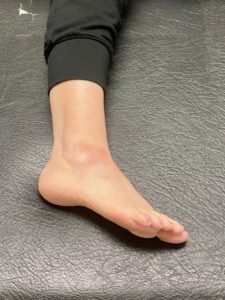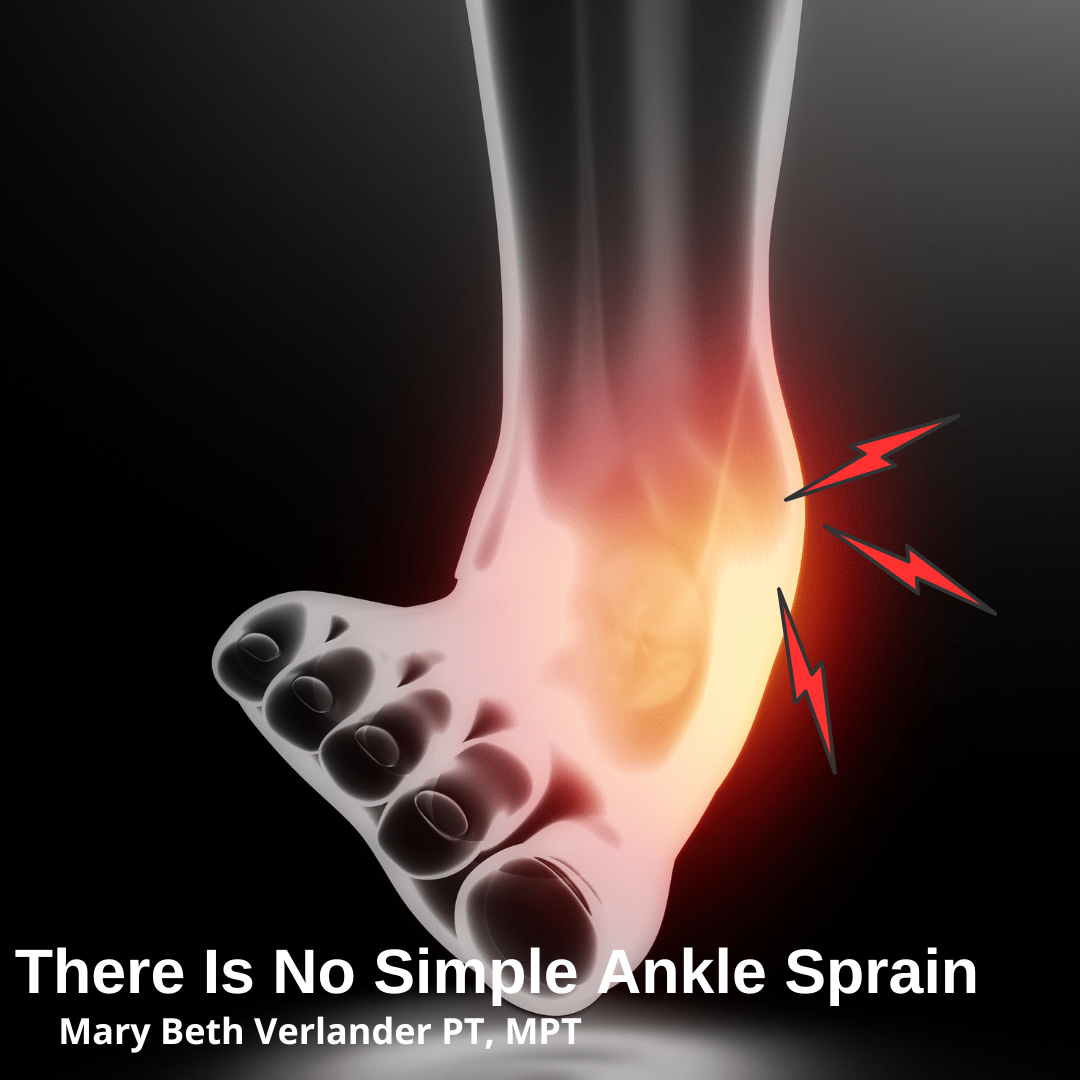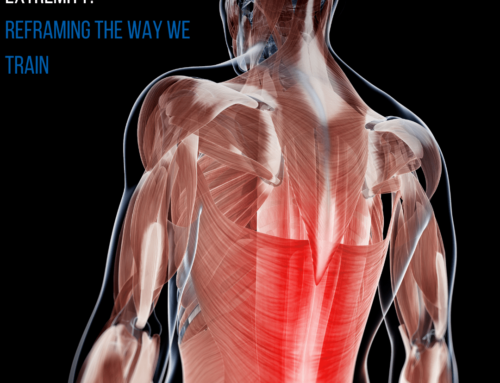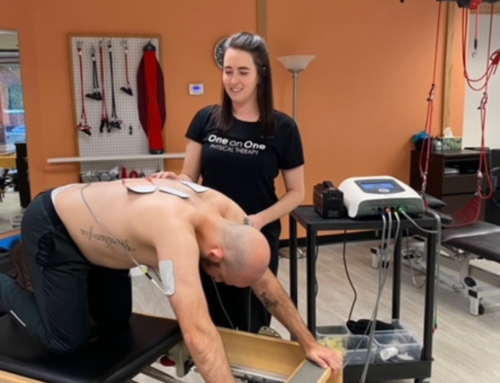Have you ever twisted or “rolled” your ankle? If so, then you likely experienced an ankle sprain. It is one of the most common soft tissue injuries in sports, with some studies reporting 23,000 ankle sprains per day in the United States. 80% of ankle sprains, for both athletes and “weekend warriors”, involve the lateral ankle ligaments.
So what happens when you twist your ankle?
The lateral ligaments (anterior talofibular, posterior talofibular and calcaneofibular ligaments) of the ankle joint are overstretched and may sustain tears. The muscles surrounding the ankle joint may not contract and relax properly. And as a result of the ligament and muscle injury, proprioception (position sense of the ankle joint) is also impaired. Proprioception is essential for weight bearing activities and allows one to “sense” one’s foot/ankle position without actually looking at it. With overstretched or torn ligaments, ineffective muscles and impaired proprioception, the ankle is unstable and ankle sprains can easily recur and lead to chronic ankle instability.
[fusion_vimeo id=”https://vimeo.com/851011179?share=copy” alignment=”” width=”” height=”” autoplay=”false” api_params=”” title_attribute=”” video_facade=”” hide_on_mobile=”small-visibility,medium-visibility,large-visibility” class=”” css_id=””][/fusion_vimeo]
Lateral Ankle sprains are diagnosed by physical examination and an X-ray is often ordered to rule out a fracture of the ankle bones. The severity of the ankle sprain is determined by a trained clinician and is classified by the following grading system: Grade 1 (mild) to Grade 3 (severe) ankle sprain. 3
Table 1
Grade |
Tissue Injured | Signs | Symptoms | Recovery Time |
|---|---|---|---|---|
| 1 | Overstretched-micro tears of AT ligament | Mild swelling | Mild tenderness | Up to 14 days |
| 2 | Partial tear of AT ligamentMicro/partial tear of CF ligament | Moderate edema | Moderate tenderness | 2-3 weeks |
| 3 | Complete tear AT, CF and PTF ligaments | Severe edema | Severe tenderness | 12 weeks or longer |
Key: AT= anterior talofibular ligament CF= calcaneofibular ligament PTF= posterior talofibular ligament.
Clinically, a patient with an ankle sprain walks into the clinic with a limp and a “locked up” ankle joint that is swollen and bruised. The patient reports tenderness of the lateral ligaments, pain with movement of the ankle, and stiffness and/or instability of the ankle joint.

A One on One Physical Therapist will perform a comprehensive evaluation and treatment in the first session. Ankle rehabilitation at One on One Physical Therapy is cutting edge and utilizes a variety of manual skills and modalities stacked or performed at the same time to speed up healing and recovery. For example, in an acute grade II ankle injury, a One on One PT will do the following:
- Manipulate the ankle joint
- Apply low-level laser on the ankle joint
- Utilize the Neubie (direct current electrical stimulation machine) when the patient performs a range of motion exercise in a water bath. –
Instructions for an individualized home exercise program will be provided.
[fusion_vimeo id=”https://vimeo.com/851031991?share=copy” alignment=”” width=”” height=”” autoplay=”false” api_params=”” title_attribute=”” video_facade=”” hide_on_mobile=”small-visibility,medium-visibility,large-visibility” class=”” css_id=””][/fusion_vimeo]
In addition, the patient will learn:
- how to apply an Ankle Stability Brace
- how to use an ice pack with compression and elevation
- how to use crutches
Finally, the physical therapist will apply tape to the heel and outer ankle bone to provide stability and facilitate carryover of the treatment when the patient leaves the clinic.
Recommended Ankle Brace
Some believe there is no “simple ankle sprain”. Studies have shown 39% of patients with untreated ankle sprains have symptoms up to 6 years later. Even if you have no lingering symptoms, an untreated ankle sprain can cause problems elsewhere in your body. In the author’s clinical experience, most patients with low back pain, hip or a knee injury have a previous untreated ankle sprain. Early and aggressive physical therapy for a lateral ankle sprain should be a high priority even for a mild ankle sprain. Early treatment will prevent ankle sprain recurrence as well as chronic ankle instability.
Click here to request your appointment with Mary Beth, highly SKILLED manual therapist, at One on One Physical Therapy.
About The Author

Mary Beth Verlander’s passion for physical therapy comes from first hand experience— as a patient. In her quest to find successful treatment, Mary Beth pursued, and continues to pursue, extensive continuing education to fine-tune her manual and neuromuscular reeducation skills. She uses advanced manual therapy techniques from Michigan State University College of Osteopathic Medicine, and the Barral Institute to determine the root cause of the physical problem, sometimes distant to the injury site. Her treatment approach allows her to see patients less often, and because it is integrates multiple body systems, her patients’ can experience improvement in other body systems, such as digestion, breathing, and sleeping, to name a few. To facilitate improved movement patterns, Mary Beth uses the Red Cord System and exercises from her advanced coursework at the Postural Restoration Institute. Blood Flow Restriction Training is part of repertoire for strength gains in both student-athletes and elderly patients and her personal exercise program.
REFERENCES
1.O’Loughlin, P. F., Murawski, C. D., Egan, C., & Kennedy, J. G. (2009). Ankle instability in sports. The Physician and sportsmedicine, 37(2), 93–103. https://doi.org/10.3810/psm.
2.Palmieri-Smith, R. M., Hopkins, J. T., & Brown, T. N. (2009). Peroneal activation deficits in persons with functional ankle instability. The American journal of sports medicine, 37(5), 982–988. https://doi.org/10.1177/
3.SAFRAN, MARC R.; BENEDETTI, ROY S.; BARTOLOZZI, ARTHUR R. III; MANDELBAUM, BERT R.. Lateral ankle sprains: a comprehensive review Part 1: etiology, pathoanatomy, histopathogenesis, and diagnosis. Medicine & Science in Sports & Exercise 31(7):p S429-S437, July 1999.
4.Loudon, J. K., Reiman, M. P., & Sylvain, J. (2014). The efficacy of manual joint mobilisation/manipulation in treatment of lateral ankle sprains: a systematic review. British journal of sports medicine, 48(5), 365–370. https://doi.org/10.1136/
5.Stergioulas A. (2004). Low-level laser treatment can reduce edema in second degree ankle sprains. Journal of clinical laser medicine & surgery, 22(2), 125–128. https://doi.org/10.1089/
6.Salpeter,G. (2021). The Neufit Method: Unleash the Power of the Nervous System for Faster Healing and Optimal Performance. Lioncrest Publishing.






